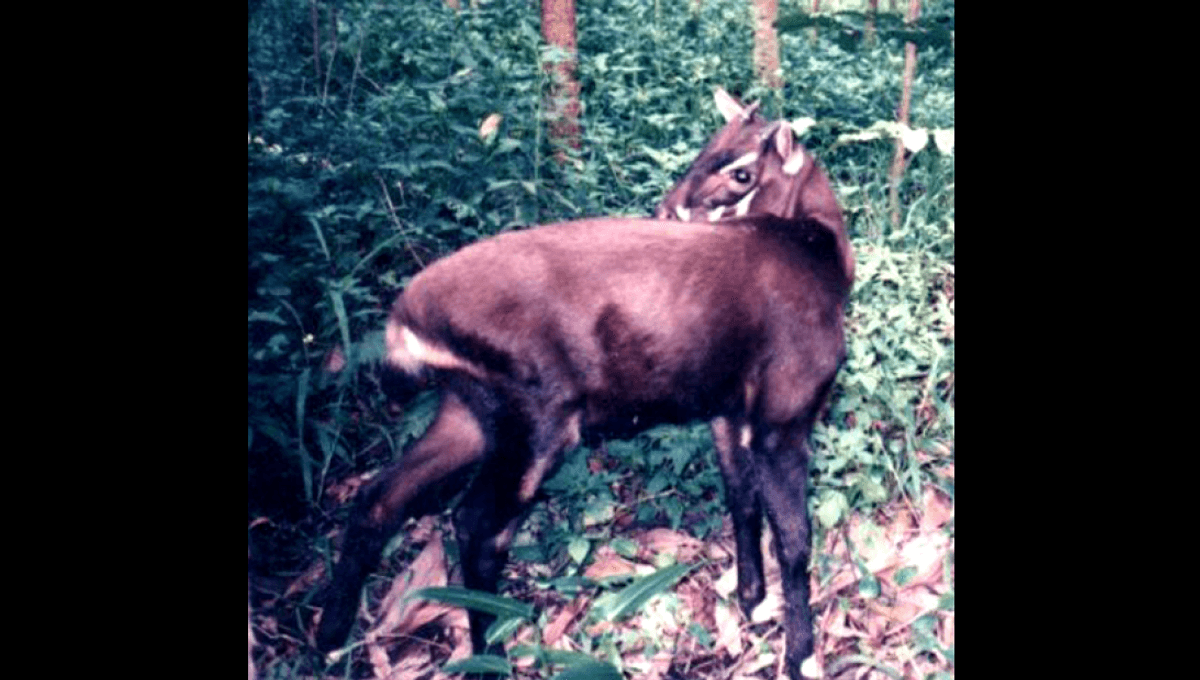
In 2013, a camera trap in Quang Nam province, Vietnam, snapped a photo of a rare and elusive animal. Known as the Asian unicorn, it lives in forests across Vietnam and Laos. At least, we think it does, but nobody’s seen one since.
The Asian unicorn (Pseudoryx nghetinhensis) or saola is up there as one of the rarest and most endangered animals in the world. In cases like this we would ideally have a captive population to lean on as a way of maintaining genetic diversity for the few animals that remain (something that’s getting a helping hand from the same DNA editing technologies that gave us the new dire wolf), but there are no saolas in captivity, and we don’t even really know if there are still saolas in the wild.
“Right now, the existence of live saolas can neither be proven nor disproven,” said Nguyen Quoc Dzung from the Forest Inventory and Planning Institute in Vietnam in a statement. “The last evidence we have was from 2013, when one was captured on a camera trap. But given the remoteness of its habitat, it is extremely difficult to say for sure whether there are still a few out there. There are some signs and indications that still give us hope.”
Along with that hope we have something we’ve never had before: the entire mapped genome of the saola. The achievement marks an enormous leap forward in our understanding of the species because, before now, we had almost no genetic data on these animals. It was done using saola remains from hunters’ homes to generate complete genomes for 26 individuals, and the results turned up some surprises.
“We were quite surprised to find that the saola is split into two populations with considerable genetic differences,” said lead author Genís Garcia Erill, a former PhD student at the University of Copenhagen’s (UCPH) Department of Biology. “The split happened between 5,000 and 20,000 years ago. That was completely unknown before, and there was also no way we could have known without genetic data. It is an important result because it affects how the genetic variation in the species is distributed.”
The data revealed that saolas have never been big on numbers, with the total population never having exceeded 5,000 individuals in the last 10,000 years. As a species, this meant genetic diversity dropped off, but crucially, it dropped off differently in those two populations, Erill mentioned. This means that if you were able to mix the two together again, it just might make up for what’s been lost.
This is where we come back to that hope, as modeling has shown that the saola’s best chance of survival rests in the two populations mixing, perhaps with the aid of a captive breeding program. Now, there’s just the small matter of going out and finding some (but we have rediscovered “lost species” before, just ask this tap-dancing spider).
“If we can bring together at least a dozen saolas – ideally a mix from both populations – to form the foundation of a future population, our models show the species would have a decent chance of long-term survival,” said Rasmus Heller, senior author of the study and Associate Professor from the Department of Biology at UCPH. “But it hinges on actually locating some individuals and starting a breeding program. That has worked before when species were on the brink of extinction.”
I guess we’re going unicorn hunting (but without guns, obviously).
The study is published in the journal Cell.
Source Link: One Of The World's Rarest And Most Endangered Mammals Is *Checks Notes* A Unicorn